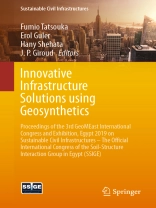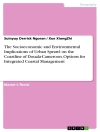This book contains contributions on advances in geosynthetics engineering. Soil reinforcement is a very useful technique to construct several cost-effective soil structures in an environmentally friendly and sustainable manner. The most commonly used reinforcement materials are galvanized steel strips, geosynthetics in the form of woven geotextiles, geogrids and geocomposites, and fibers from natural and waste products. In recent years, there have been advances in the area of soil reinforcement, especially in the utilization of the technique in field projects. The researchers have also been working to understand the behaviour of reinforced soil considering the field challenges of reinforced soil structures.
Tabella dei contenuti
Giant Geotextile Tube Applied to the Temporary Cofferdam Reclamation Construction for a New-Build Container Base at Harbor in Taiwan.- Effect of Strain Rate on Cyclic Behavior of Pond Ash Reinforced with Geocell.- Developments in MSE Wall Research and Design.- Cemented Lateritic Soil as Base Material Improvement using Compression.- Potentiality of Boehmeria Nivea as Alternative Material in the Production of Geotextile.- Geomembrane stress cracking resistance depending on the polymer used.- A geomembrane liner to stop water seepage in an 8 km long embankment: the Bill Young reservoir case history.- Experimental Research and Application of Geopolymer in Soft Soil Foundation Treatment.- Effect of offset distance on tiered reinforced soil retaining wall subjected to dynamic excitation.- Review of Process Control and Assurance for Optimized Seaming Condition Optimization of Woven Geotextiles to Improve Stability in Soft Soil Structure.- Celebrating Reinforced Soil Structures:A historic review from the original concept to today design and GOOD construction practice using site-won and other reinforced soil fills.












